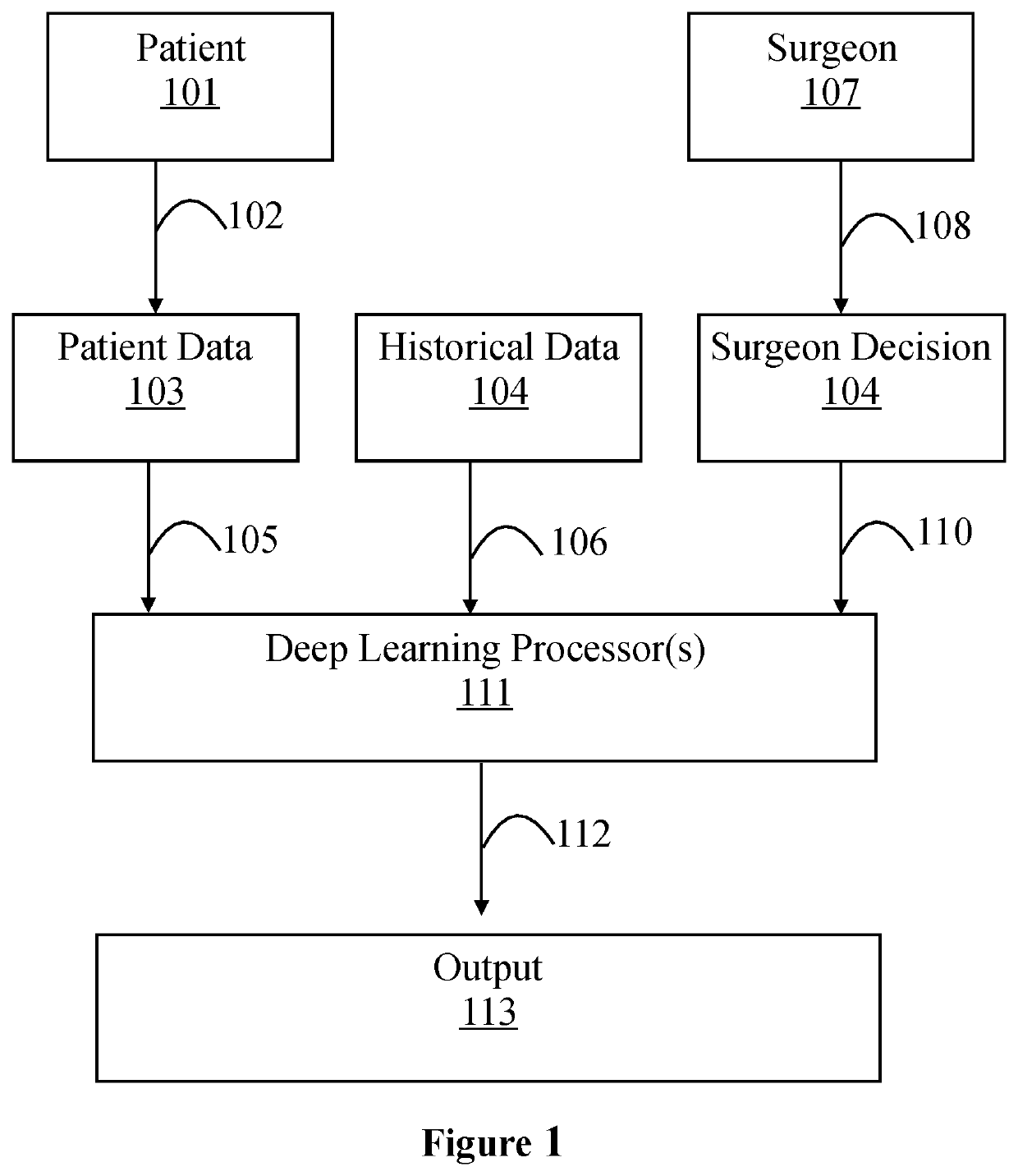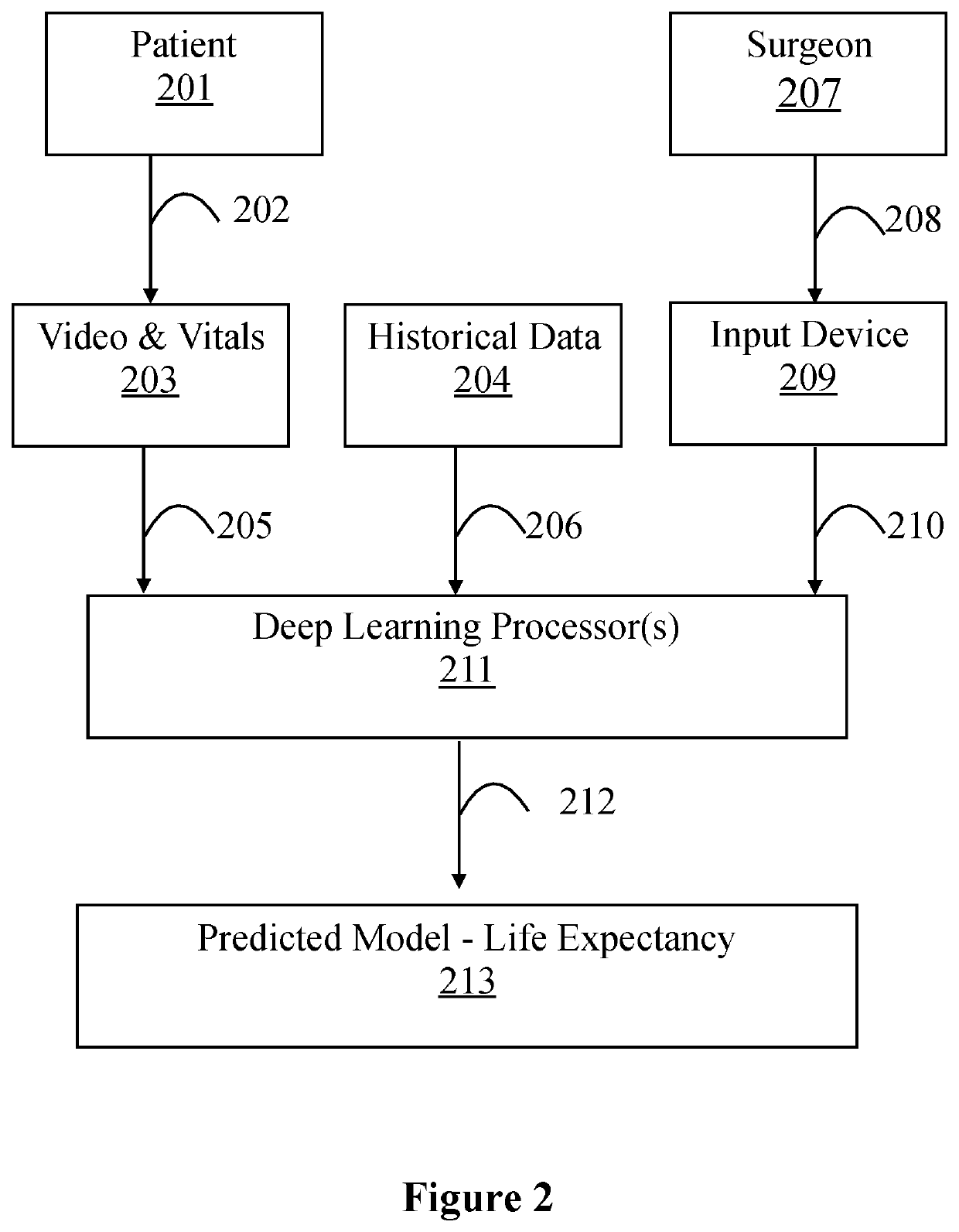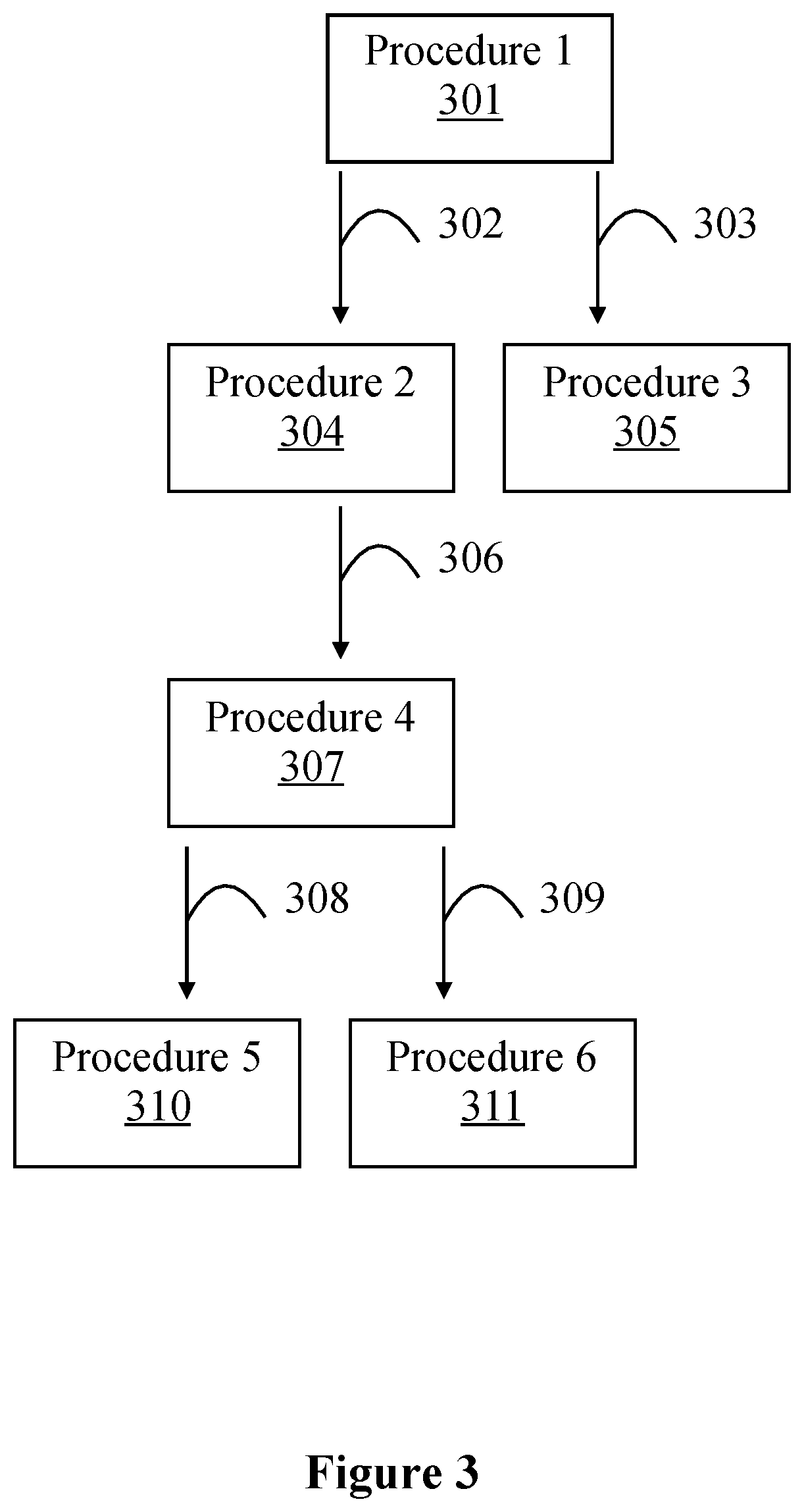System for Surgical Decisions Using Deep Learning
a technology of deep learning and surgical decisions, applied in the field of system for surgical decisions using deep learning, to achieve the effect of increasing the accuracy, less time, and greater accuracy of the machine learning system
- Summary
- Abstract
- Description
- Claims
- Application Information
AI Technical Summary
Benefits of technology
Problems solved by technology
Method used
Image
Examples
Embodiment Construction
Detailed Description of Best Mode for Carrying Out the Invention
[0043]The making and using of the presently preferred embodiments are discussed in detail below. It should be appreciated, however, that the present invention provides many applicable inventive concepts that can be embodied in a wide variety of specific contexts. The specific embodiments discussed are merely illustrative of specific ways to make and use the invention, and do not limit the scope of the invention.
[0044]The present invention will be described with respect to preferred embodiments in a specific context, namely an advanced predictive method of surgery, specifically to a predictive mechanism for procedural risks, operating costs of certain procedures, life expectancy, and anesthesia time left until patient awakes.
Operation of Best Mode for Carrying Out the Invention
[0045]Referring now to the drawings in detail, and initially to FIG. 1, a system for surgical decisions using deep learning. A patient (101) is ha...
PUM
 Login to View More
Login to View More Abstract
Description
Claims
Application Information
 Login to View More
Login to View More - R&D
- Intellectual Property
- Life Sciences
- Materials
- Tech Scout
- Unparalleled Data Quality
- Higher Quality Content
- 60% Fewer Hallucinations
Browse by: Latest US Patents, China's latest patents, Technical Efficacy Thesaurus, Application Domain, Technology Topic, Popular Technical Reports.
© 2025 PatSnap. All rights reserved.Legal|Privacy policy|Modern Slavery Act Transparency Statement|Sitemap|About US| Contact US: help@patsnap.com



